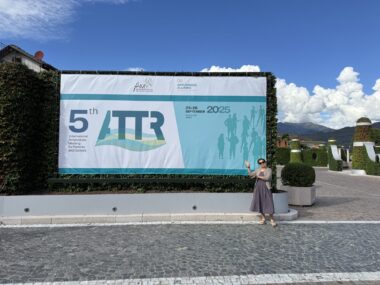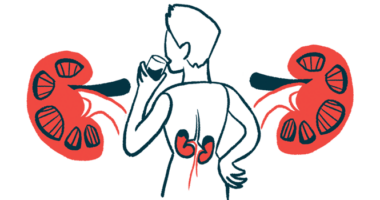I wish my country could benefit from gains in amyloidosis treatment
A recent international conference highlighted the disparities

I’ve just returned from an amyloidosis conference in Baveno, Italy, organized by the Amyloidosis Alliance. This biennial event — called the International ATTR Amyloidosis Meeting for Patients and Doctors — brings together patients, families, patient advocates, clinicians, and pharmaceutical companies from around the world for two days of meetings, seminars, and social gatherings. It’s a unique opportunity to connect with fellow advocates and patients, share personal stories, and discuss the state of amyloidosis treatment and support in our respective countries.
I had the pleasure of chairing a session on the burden of caregiving. As I listened to the two speakers discuss their journey of caring for loved ones diagnosed with this disease, it brought me back to my own experience providing care for my late husband, Aubrey, who passed away three years ago due to hereditary ATTR amyloidosis.
Feelings of sadness, helplessness, and despair came flooding back. It was difficult to hold back the tears, but I recognize the importance of embracing these emotions when they happen. It’s what fuels me to keep pushing for positive change.

Columnist Jaime Christmas was proud to be among her peers at this year’s International ATTR Amyloidosis Meeting for Patients and Doctors in Baveno, Italy, but she wishes her own country of New Zealand would fund more amyloidosis treatments. (Photo by Darren James)
My journey as a caregiver and advocate began in 2020, when Aubrey was diagnosed. Five years later, the situation regarding treatment here in New Zealand, where I live, is mostly unchanged. Funding for medications like Vyndaqel (tafamidis meglumine) and Amvuttra (vutrisiran), which have been available for years in other countries, still hasn’t been approved in New Zealand. This delay is a matter of life and death for many patients.
For these amyloidosis patients, the reality is stark. Their only options are to enroll in a limited number of clinical trials, move to Australia, or face the enormous financial burden of flying overseas and purchasing the medicine.
Being in the same room with my peers and hearing about the breakthroughs they’ve achieved through treatment is encouraging, but it also leaves me discouraged as a representative of my country. I wish I could share with them good news that we’ve finally achieved something and that our advocacy work has saved lives, and that people in New Zealand no longer need to suffer the drastic impact of amyloidosis.
Nevertheless, despite our challenges, I remain hopeful. As newer drugs enter the market and researchers continue working on a potential cure, I’m filled with optimism. When these advancements become a reality, New Zealand will hopefully benefit from them. At least that’s what keeps me going.
Note: FAP News Today is strictly a news and information website about the disease. It does not provide medical advice, diagnosis, or treatment. This content is not intended to be a substitute for professional medical advice, diagnosis, or treatment. Always seek the advice of your physician or other qualified health provider with any questions you may have regarding a medical condition. Never disregard professional medical advice or delay in seeking it because of something you have read on this website. The opinions expressed in this column are not those of FAP News Today or its parent company, Bionews, and are intended to spark discussion about issues pertaining to familial amyloid polyneuropathy.








Leave a comment
Fill in the required fields to post. Your email address will not be published.